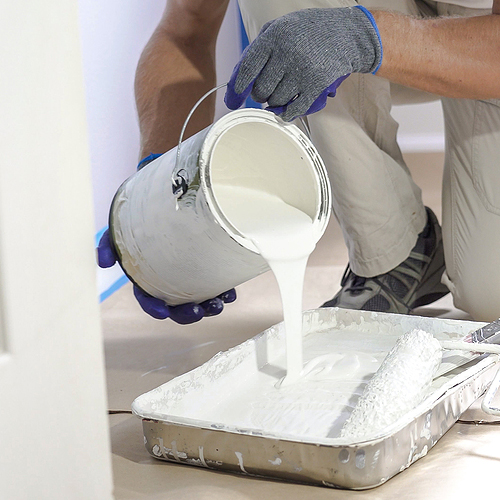Listen closely to paint specialists who recommend primer when quoting their hourly rate compared to contractors who may decide to skip the primer and charge by the job. The condition of your walls determines if, in fact, you need to use primer or not. Sometimes, the walls were painted recently and this may allow you to avoid primer. In case you are painting out a dark color, plan on making time to apply some layers of primer.
DIY painters may choose to skip the priming step, citing cost and time. These factors may seem feasible and like priming is a waste. Should there be water stains or surface stains of any kind, priming is vital. Check around the window seal and the roof to see if there are any signs of water damage. Priming hides blemishes and produces a surface ready for paint adhesion. It really is an fundamental step.Priming will help the paint adhere properly and hiding any small imperfections.
Why Primer Is Considered Necessary
Primer works by prepping the surface and establishing stability so the paint can adhere to the wall. It seals in the dark hues enabling surface stains hide. Using primer implies less paint will be needed for coverups..
Provides a Stable Surface Base
Depending on how porous the wall is can signify primer use. On a extremely porous wall surface, paint is likely to collect. Numerous paint applications will be required before the paint can form a unanimous coat. Using primer enables you to seal the situation and permits you to use less paint.
Adhesion can be tough with color paints if the wall is too glossy and smooth. Using a primer creates a slightly porous texture with the right amount of roughness to develop perfect paint adhesion.
Take Care Of Stains
Ugly wall-stains can sometimes pass through through the paint. Using primer helps you avoid the issue of having blemishes wreck your new paint. Allow your color coat to stand out and look it’s absolute best by decreasing any stain issues.
Since primer typically costs less than paint, use this to produce your base instead of necessitating multiple paint layers.
Using a paint primer can bring endurance to your painting project. It is advisable to determine the condition of the wall after you prime it since it can make a significant difference.
Do I Have To Prime?
There are many reasons why primer benefits your wall surface and improves your end result. Popular priming problems include a permeable surface. Porous surfaces are all over the place. Porous areas are all over the place.
Freshly Installed Drywall
Fresh drywall is extremely porous. The bare-facing paper and the joint compound around the seams are very porous. Prime your sheetrock first to use far less paint.
Prime your sheetrock first to use significantly less paint.
Wood Surfaces
Natural wood is extremely porous and thirsty. Applying a primer first will save you massive amounts of paint.
It is crucial to use a primer first on bare wood because this is a normally thirsty substance.
Masonry work and bricks are extremely porous and need a heat-formulated primer for correct sealing prior to painting.
Drywall Is Skim-Coated
A drywall skim coat is a thin portion of drywall compound skimmed over the plain drywall. A drywall skim coat is a thin amount of drywall compound skimmed over the plain drywall. It's a very porous item, a lot like wood and drywall. It needs a minimum of one coating of primer before painting.
When the Prior Coat Is Glossy
If you happen to be repainting anything that has a polished paint coat, you need to scuff it up for best results. Simply take some sandpaper and lightly roughen it up. Next, use one or two primer coats to ensure your topcoat goes on perfectly. If you miss the scuffing step, using a primer can still help to prepare your item to hold paint much better. Using steel wool or sandpaper on lustrous plastics or paint before painting will generate texture and invite better paint adhesion.
Transitioning From Dark Colors To Lighter Shades
Use two stages of white primer for your base coat if you are painting over a dark color such as black. This will help you avoid the issue of dark colours bleeding through several coats of light colours. Your primer can typically be tinted. In the event you are transitioning from a light color to a dark color, you could opt to tint your primer. This can help you require fewer coats as a whole.
A tinted primer can help you use less coats.
Water-stained or spotted locations immensely benefit from a primer. Choose a specialty item to seal any likely mold or mildew spores such as Kilz to form a fresh barrier. Priming properly prepares the surface to handle paint and offer a professional finish. While it may be tempting to skip primer, the result will be drastically different.




